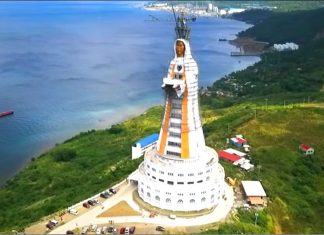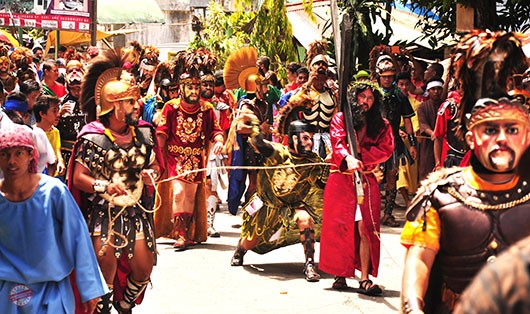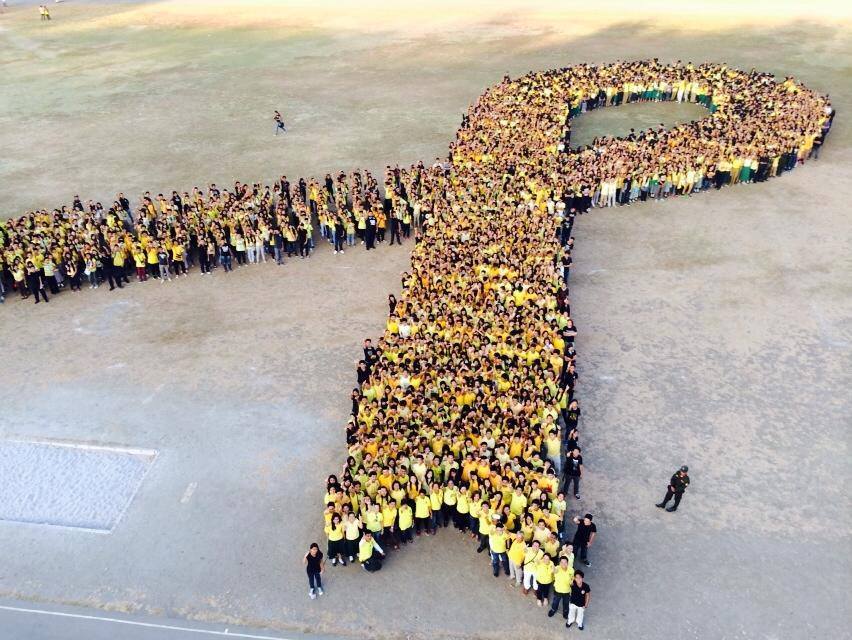
The 34th anniversary of EDSA People Power, the mass uprising of Filipinos who gathered at the capital’s main highway to call for the downfall of a tyrant, is being celebrated today.
The commemoration of the Philippines’ legacy to world history is set amidst a Covid-19 scare that discourages mass gatherings, a media environment that has shades of Martial Law-like strikes on press freedom, and a prevailing stigma on the color yellow that was once the symbol of the Philippine nation’s brave stance against a dictatorship.
EDSA People Power had Filipinos stirring across the nation and the world – and the world was abuzz at it watched the developing story that was tagged as “the Philippines teaching the world what is democracy”.
People gathered on EDSA Highway showed defiance in the face of soldiers, guns, and tanks that were gathered around them and awaiting the signal to strike down the mass assembly. Now-iconic snapshots revealed many aspects of the brave stance of the people: flowers being placed as corks on guns, smiles exchanged between rallyists and soldiers, and food being shared across the lines between the people and the military.
February 25, 1986, marked the day of victory of what is also known as the EDSA Revolution EDSA Revolution, the 4-day revolt that started on February 22 along Epifanio De Los Santos Avenue (EDSA) in Metro Manila and spread throughout the capital and across the nation including but not limited to Cebu, Iloilo, Davao, in similar gatherings that called for then-President Ferdinand Marcos to vacate the Malacanang Palace post which he held for 21 years.
Thirty-four years ago today, Marcos was forced to give up and left for the United States as a new president assumed office. The first woman President of the Philippines, Corazon Aquino, was finally sworn into office after being declared the winner of the February 1986 Snap Presidential Elections that the Marcoses ignored.
And people and nations started looking to the Philippines as a model of a movement of resistance against tyrannical rule.
WHEN YELLOW MEANT COURAGE
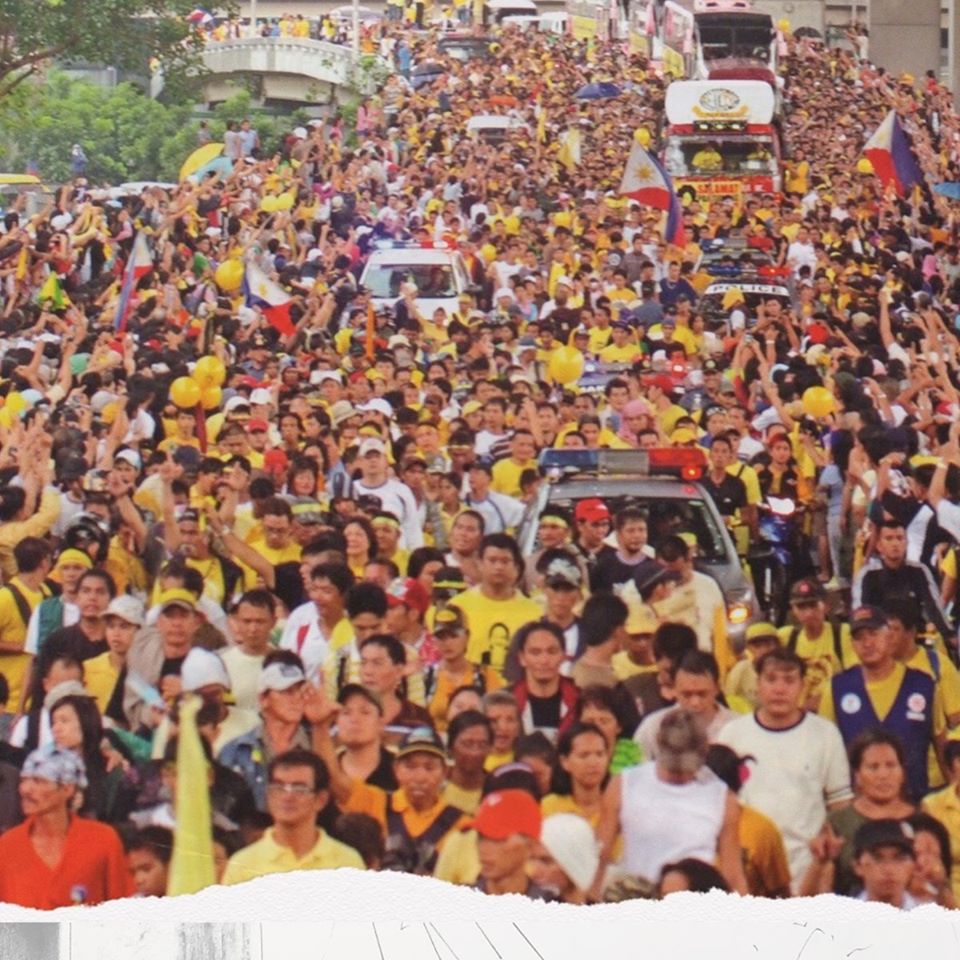
Corazon Aquino was the wife of assassinated opposition leader Benigno “Ninoy” Aquino Jr. whose death triggered the peaking of the decades-long opposition to the dictatorship in the Philippines that included the First Quarter Storm in 1970, growing unrest among the masses who took up arms in their fight for justice, political demonstrations, multi-sectoral alliances, and more.
Ninoy Aquino was living in exile in America after being imprisoned for several years in the Philippines. He sought to return but his pleas were refused by the state. He was warned of meeting imprisonment or death when he does return but Aquino insisted on coming back despite threats to his life and was quoted saying his now-iconic statement, “the Filipino is worth dying for.” Anticipating his return, the opposition once again brandished the color yellow of Ninoy’s political party to signify defiance and the song “Tie a Yellow Ribbon” accompanied the movement to welcome home the Marcos rival.
Traveling under an alias, Aquino finally returned to his homeland on August 21, 1983, only to be shot dead by a trigger that launched more massive protests that eventually led to Marcos agreeing to a snap presidential election with Ninoy’s widow, Corazon. Challenging the president as she brandished the color yellow in her campaign, Corazon Aquino won the people’s votes. When the people’s voice was ignored by Marcos, events escalated and eventually culminated in the EDSA People Power of February 1986.
DECADES-LONG STRUGGLE
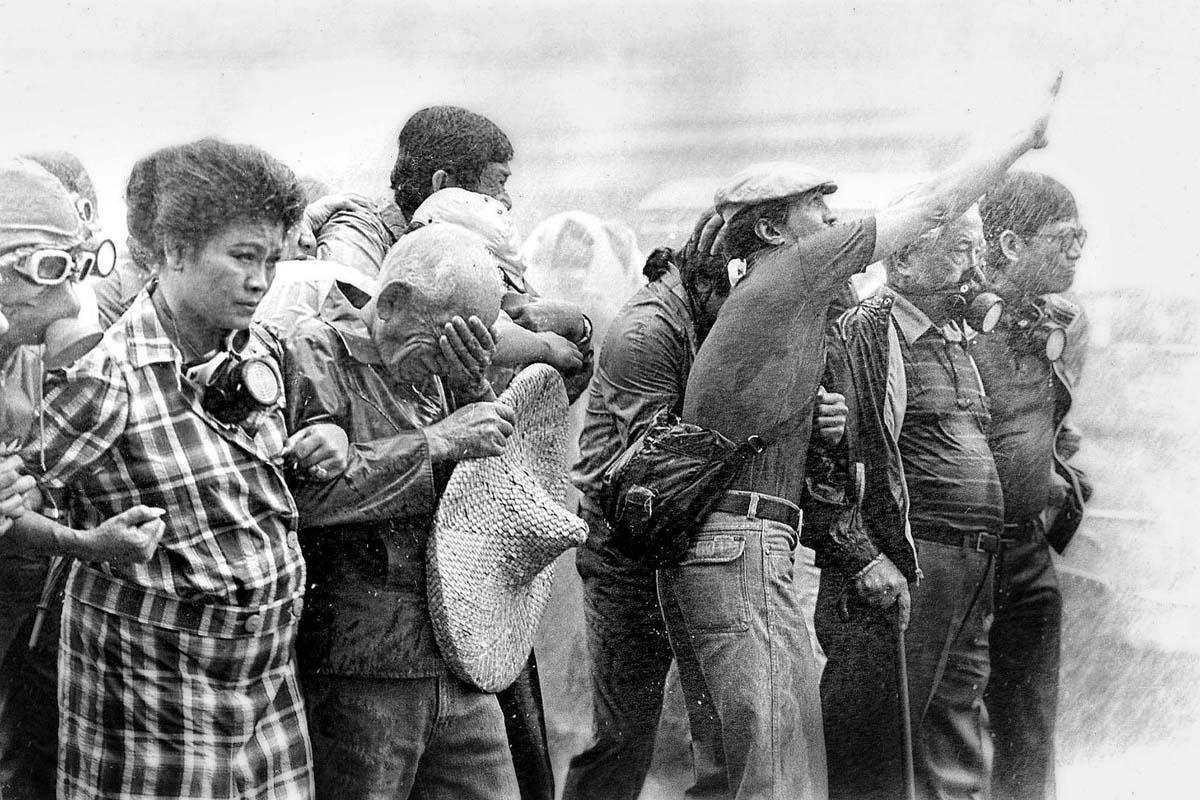
The four days of February 1986 are recorded in Philippine history as the culmination of many years of opposition in various sectors of the society. Attempts at historical revisionism downplayed the struggle, setting aside the deaths, the missing, the injustice, the gag placed on media by martial law.
The EDSA People Power was an unprecedented mass movement of people who defied the sitting government which it declared as having lost the elections to the wife of his slain avowed rival in politics. The four days were historic for the ousting of a president without resorting to violence that typically accompanies revolts.
The Philippines’ People Power was a victory not only for Filipinos but for other nations who were shown the way to unseat tyrants who ignored the people’s voice. People Power became a concept that rang throughout the world, prompting CBS News reporter Bob Simon to say on air, “We Americans like to think we taught the Filipinos democracy. Well, tonight they are teaching the world.”
SEND CHEERS in the comments below to the Filipino nation for its legacy of People Power to topple tyrants!
Want to know how to be a Proud Pinoy? Like, Follow, Subscribe to GoodNewsPilipinas.com and our socials Facebook, Twitter, Instagram, Good News Pilipinas! TV on YouTube, for new good story notifications and e-mail newsletters for updates on more Filipino Pride stories.






